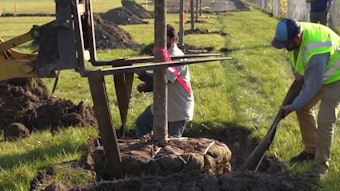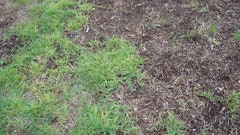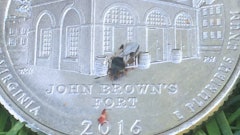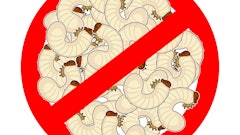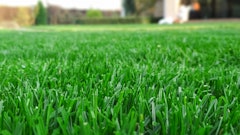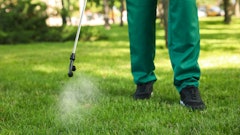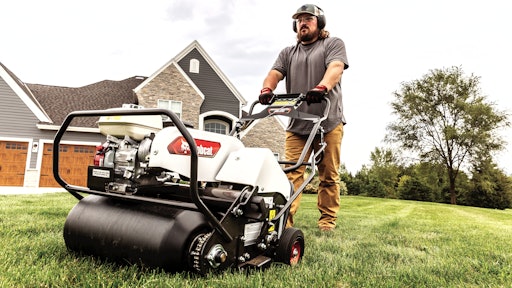
There are many factors that contribute to a healthy, thriving turf. While regular watering and mowing practices naturally come to mind, landscape professionals and homeowners alike need to understand the benefits of aeration and overseeding for long-term turf health. There can be misconceptions about what a preferred aeration and overseeing routine should look like. Thankfully, understanding the key best practices for aeration and overseeding is simple.
Understanding the terminology
Aeration involves using a machine (an aerator or grounds maintenance machine with an aerator attachment, depending on the size of the property) to pull plugs leaving small holes in your lawn's soil, allowing air, water and nutrients to reach the roots more easily. Overseeding is the practice of spreading grass seed over existing turf to minimize and fill in thin areas or help establish new growth. Both processes can improve the look of a landscape and help it look full, lush and vibrant.
Without aeration and overseeding, lawns and turf can become patchy, thin and unhealthy. This can especially be the case during long dry spells or drought conditions.
Building aeration and overseeding into a lawn care routine
There are several reasons to incorporate aeration and overseeding into a lawn care routine. Lawn care professionals can help educate property owners and homeowners on both practices' numerous benefits, as well as their long-term positive effects.
Aeration helps to reduce soil compaction, improves soil structure, provides better water infiltration and nutrient uptake and fosters growth of beneficial microorganisms. Overseeding introduces new grass varieties that can support longevity and resiliency. Aeration and overseeding together can be a great way to boost the health of a lawn, with better drainage, more oxygen in the soil and enhanced nutrients for surrounding plant life. Lawn care professionals can help people understand that the processes for aeration and overseeding are both cost-effective and easy ways to get more life out of their turf and investment is key.
Easy tips to start an aeration and overseeding routine
Prepare the turf
The first step for beginning an aeration and overseeding routine is to properly prepare the turf:
- Clear the turf or lawn of any debris, such as branches, leaves or lawn clippings.
- Complete a final season cut a little bit shorter than normal.
- Water between one and three days before the aeration process. The moisture will help the aerator better penetrate the soil. It’s important not to overwater the turf, which can create turf that is too muddy to properly aerate.
- Flag sprinkler heads, invisible fences, irrigation pipes and other objects just below the ground. This is important as aerators can pull soil cores from depths of 2 to 5 inches beneath the ground surface.
- For any newly seeded or sodded grass, wait a full calendar year before starting the aeration and overseeding process.
Consider seasonality
The timeframe in which you aerate and overseed depends on the type of grass you have.
For cold-season grasses, such as Kentucky bluegrass or perennial ryegrass, aerate and overseed in the fall to allow for ideal soil and weather conditions. The cooler weather allows grass seed to better germinate and establish a strong root system ahead of the winter season. This timing has been proven to provide the best results in the development of healthy grass.
For warm-season grasses, such as Bermuda grass or zoysia grass, the best time to aerate is late spring to early summer when the soil temperature reaches around 70 degrees F. This timing allows the warm season grass seeds to take advantage of the warmer weather for successful growth and development.
Postaeration and overseeding best practices
Aftercare for a newly aerated and overseeded turf or lawn is critical to ensure the success of the newly seeded grass. Lawn care operators should encourage property owners to do the following:
- Leave aeration plugs alone to ensure micronutrients release back into the soil. These plugs will break down after a few weeks.
- Keep foot traffic to a minimum for the first few weeks.
- Keep the soil moist with regular watering; however, avoid overwatering, which can cause fungal diseases in the grass.
- Avoid mowing until the new grass has reached a height of at least three inches.
See the connections
Lawn care operators should make property owners aware of the negative consequences of not aerating or overseeding often enough or at all. Here are some reasons for aeration and overseeing:
- Water puddling and runoff
- Thinning grass
- Thatch prevention
- Discoloration
- Dry/hard soil
- Clay soil
- Heavy, visible foot traffic
- Inability for turf to receive moisture
- Uneven growth
Aeration and overseeding are important to maintain healthy, thriving turf. For lawn care professionals and property owners alike, the results of effective aeration and overseeding routines speak for themselves.

